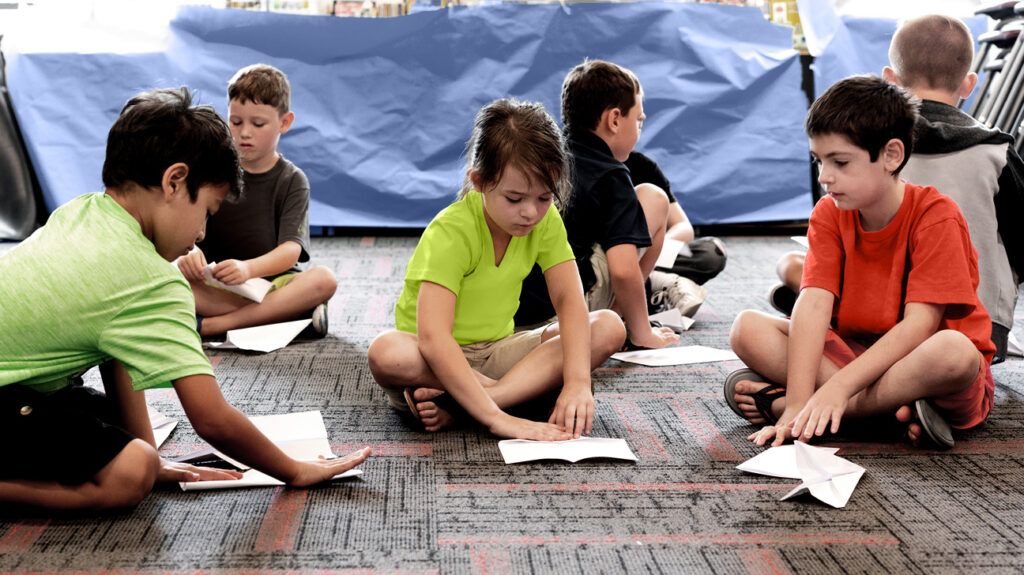Obsessive-compulsive disorder (OCD) can affect children and adults. Obsessive thoughts are difficult to spot, but compulsive behaviors are usually more obvious.
OCD often develops between the ages of 6 and 9 years. Children with OCD have intrusive thoughts or obsessions that cause them intense anxiety. To relieve their anxiety, they perform actions or compulsions that are not always visible to others.
Young children do not always realize their thoughts are unrealistic or exaggerated and may not relate their thoughts to their compulsive behaviors.
This article discusses obsessions and compulsions in childhood OCD, how the condition can affect daily life, and how parents and caregivers can support children with OCD.

OCD has two main elements: obsessive thoughts and compulsive behaviors.
What are obsessive thoughts in childhood OCD?
It is
For children with OCD, intrusive thoughts occur regularly and take up a lot of mental energy, interfering with their ability to focus on other things. These thoughts also cause extreme anxiety.
Unless a child talks about their obsessive thoughts, it is difficult for adults to know they are experiencing them.
According to the Child Mind Institute, common obsessive thoughts fall into several categories that include:
- Contamination: A child may worry about germs and touching objects that might make them sick.
- Magical thinking: A child may think that doing certain actions will have serious consequences that are unrealistic. For example, “If I count to 100, my dog will not die.”
- Scrupulosity: Children may worry about offending a god and being blasphemous.
- Aggression: Children may think they are going to hurt or kill someone else. They may obsess about all the negative actions they could do.
- Making things right: Children may seek a feeling of things being “just right” and may carry out compulsive behaviors in the hope of achieving that feeling.
What are compulsions in childhood OCD?
Compulsions are easier to spot than obsessive thoughts, but not always. Children with OCD perform compulsive behaviors to relieve the anxiety due to their obsessive thoughts. A child might do something physically or avoid doing it. They may also perform a mental ritual, such as counting or reciting a phrase over and over.
Although compulsions are often visible, many adults do not understand that they stem from obsessive thoughts.
Examples of compulsive behaviors in children include:
- excessive handwashing or cleaning
- checking multiple times that things are in order or safe
- repeating actions multiple times, such as rereading or rewriting
- counting items over and over or counting in their head
- arranging or organizing objects so they are lined up or symmetrical
- difficulty throwing things away
- doing or not doing certain things because they think there will be a serious consequence
- asking the same or similar questions repeatedly
- requiring mealtimes to follow the same rituals or for food to be arranged in a specific way
Caregivers may notice these compulsive behaviors or their consequences, such as having raw, chapped hands due to excessive handwashing.
Read about the link between OCD and anxiety.
The obsessions and compulsions of OCD can get in the way of a child’s daily life. This can negatively affect their functioning at school, their friendships and other relationships, and their emotional well-being.
Children may feel ashamed or embarrassed about their OCD. They may avoid talking openly about it because they worry people will think they are odd.
At school, children with OCD might do the following:
- asking to go to the bathroom multiple times and spending a lot of time there
- asking repetitive questions
- checking objects or their work repeatedly in the classroom
- having difficulty finishing an activity and moving on
- seeking perfection and redoing work repeatedly
- seeming distracted, tired, or anxious
While children with OCD are at school, adults may mistake their behavior for other conditions.
Children are often distracted by their obsessions and compulsions, preventing them from paying attention in class and focusing on their school work. Adults may misinterpret this as attention deficit hyperactivity disorder (ADHD).
Adults may also assume a child has an anxiety disorder when they worry about not doing their work perfectly or find it difficult to switch between tasks.
Adults may perceive a child’s behavior as oppositional if they do not follow their teachers’ instructions. The child may be torn between following instructions and performing the compulsions they think will relieve their anxiety.
Children with OCD have a higher risk of experiencing other mental health conditions, such as depression, eating disorders, and panic disorder.
Mental health resources
Visit our dedicated hub for more research-backed information and resources on mental health and well-being.
It is important for children to be able to express how they feel without fear of negative consequences or feeling silly. Adults must listen to the child and take what they say seriously. However unrealistic a child’s thoughts and compulsions are, they are very real to them, and openly discussing them can help caregivers understand the issue and support the child.
Caregivers can ask a child’s primary doctor and school to support a referral to a mental health professional for diagnosis and treatment. Treatment
Mental health professionals can work with families and the child to find ways of supporting the child and improving their daily functioning.
Read about types of psychotherapy for OCD.
Some symptoms of obsessive-compulsive disorder (OCD) in children, such as obsessive thoughts, may not be obvious. Compulsive behaviors are sometimes more noticeable, but adults may not recognize them as signs of OCD.
OCD can cause extreme anxiety in children and affect their social functioning, their success at school, and their emotional well-being.
It is important that children feel safe to talk openly about their worries, which is the first step toward receiving treatment and support.


